I’ve always been curious about why window shades come with such a hefty price tag. After spending hours researching and shopping for my own home, I realized there’s more to it than meets the eye.
In this article, I’ll break down the reasons behind the high costs of window shades, exploring everything from materials to installation.
My goal is to help you understand what drives these prices and whether they’re worth it, so you can make informed decisions for your own space.
Key Reasons Behind The High Cost of Window Shades
Here’s a quick rundown of the main factors contributing to the expense of window shades:
- Premium Materials and Fabrics
- Customization and Made-to-Measure Designs
- Advanced Technology and Smart Features
- Labor-Intensive Manufacturing
- Professional Installation Costs
- Brand Reputation and Marketing
- Energy Efficiency and Specialty Features
- Supply Chain and Import Costs
- Durability and Longevity
Each of these plays a significant role, and I’ll walk you through them one by one to uncover why your wallet feels the pinch when shopping for shades.
Premium Materials and Fabrics

When I first started shopping for window shades, I was shocked by the variety of materials available.
From luxurious silk to high-tech blackout fabrics, the options seem endless.
But here’s the thing: the quality of materials directly impacts the price.
High-end shades often use fabrics like linen, cotton blends, or even handwoven textiles that feel soft yet durable.
These aren’t your average department store curtains; they’re designed to last and look good doing it.
Take blackout shades, for example. They’re not just a piece of cloth; they’re engineered with multiple layers to block out light completely. I’ve seen some with thermal linings that also insulate your home, keeping it cool in summer and warm in winter.
These specialized fabrics require advanced manufacturing techniques, which add to the cost. Even natural materials like bamboo or wood for woven shades are pricier because they’re sourced sustainably or treated to resist moisture and UV damage.
Then there’s the aesthetic factor. Premium shades come in a dizzying array of colors, patterns, and textures, often sourced from designers who know how to make a window pop.
I once considered a set of Roman shades with a subtle geometric pattern, only to learn the fabric was imported from a European mill. That kind of exclusivity doesn’t come cheap, but it does explain why the price tag made my eyes water.
Customization and Made-to-Measure Designs

One thing I quickly learned is that window shades aren’t one-size-fits-all.
Unlike grabbing a pair of curtains off the shelf, most shades are custom-made to fit your windows perfectly.
This made-to-measure approach is a huge reason for the cost, and honestly, it makes sense when you think about it.
Every window in my house is a slightly different size, and I’m betting yours are too.
Whether it’s a bay window, a skylight, or an oddly shaped frame, shades need to be tailored to fit exactly.
I remember measuring my living room windows and realizing no standard size would work without leaving gaps or looking sloppy. Custom shades are cut, sewn, and assembled to your exact specifications, which takes time and skill.
This customization extends beyond size. You can choose the opacity (sheer, light-filtering, or blackout), the mounting style (inside or outside the frame), and even the hardware finish.
I was amazed at how many options there were for something as simple as a roller shade—down to the type of hem or the pull mechanism. Each choice adds to the labor and materials needed, driving up the price.
But when the shades arrived and fit like a glove, I couldn’t deny the value of that precision.
Advanced Technology and Smart Features

I’ll admit, I was skeptical about “smart” window shades at first.
Motorized shades sounded like a luxury for tech geeks with too much money.
But after seeing them in action at a friend’s house, I got why they’re so expensive—and why they’re tempting.
These shades are packed with technology that makes life easier but comes at a premium.
Motorized shades let you control them with a remote, a smartphone app, or even voice commands through systems like Alexa or Google Home. I saw a set that automatically adjusted based on the time of day, tilting to let in morning light but blocking harsh afternoon rays.
That kind of convenience requires sophisticated motors, sensors, and sometimes even solar panels embedded in the shade. The tech isn’t cheap, and neither is the engineering to make it reliable.
Even non-motorized shades often come with advanced features. I looked at some with cordless lift systems, which are safer for kids and pets but require intricate internal mechanisms.
These systems are designed to be smooth and durable, which means more R&D and higher production costs. When you’re paying for shades that integrate with your smart home or glide effortlessly with a gentle tug, you’re also paying for the innovation behind them.
Labor-Intensive Manufacturing
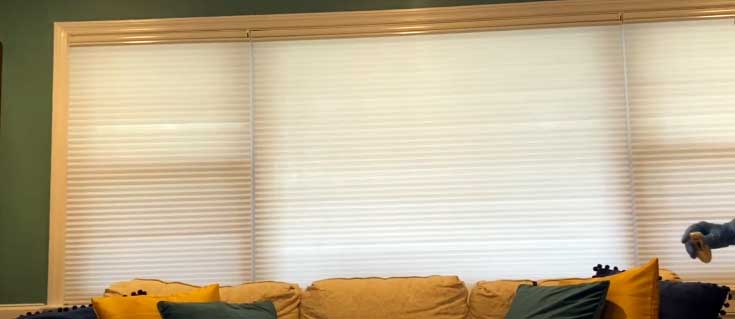
I never thought about how much work goes into making a single window shade until I watched a video of the process. It’s not just cutting fabric and slapping it on a roller. Each shade is a small feat of craftsmanship, and that labor adds up.
Take Roman shades, for example. They’re folded and sewn to create those elegant pleats, often with hidden rods or weights to ensure they hang just right. I learned that skilled artisans often hand-sew certain elements, especially for high-end or custom designs.
Even machine-made shades require multiple steps: cutting, stitching, assembling hardware, and quality checks. Factories with experienced workers don’t come cheap, especially when they’re producing small batches for custom orders.
I also found out that many premium shades are made in countries with high labor standards, which means fair wages and safe working conditions. While I’m all for ethical production, it does increase the cost compared to mass-produced alternatives from less regulated markets.
When I considered how much care went into making my shades, I started to see why the price reflected that effort.
Professional Installation Costs
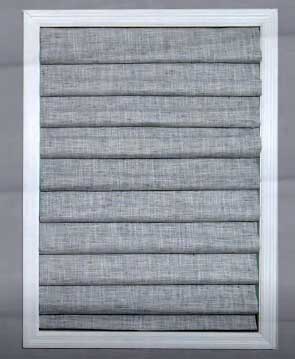
Here’s a truth I learned the hard way: installing window shades isn’t always a DIY job.
I thought I could hang my own cellular shades to save a few bucks, but after struggling with uneven brackets and a crooked shade, I gave up and called a pro.
That installation fee added a chunk to the overall cost, but it was worth it for the flawless result.
Professional installation is often recommended for shades, especially custom or motorized ones.
The installer has to measure precisely, account for window quirks, and ensure the shades operate smoothly.
For larger windows or hard-to-reach spots like skylights, it’s practically a necessity. I paid about $100 per window for installation, which stung, but the shades looked perfect and worked flawlessly.
Some companies bundle installation into the price, which can make the upfront cost seem even higher. But when you consider the tools, expertise, and time involved, it’s clear why this service isn’t cheap. If you’re handy and have standard windows, you might save by installing yourself.
Brand Reputation and Marketing
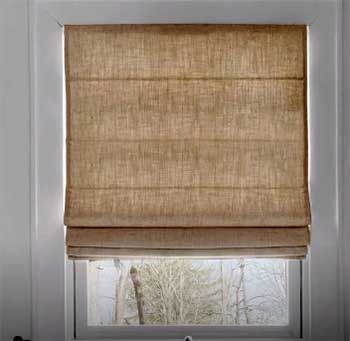
I’ll be honest—sometimes you’re paying for the name.
When I shopped for shades, I noticed that certain brands commanded higher prices, even for seemingly similar products.
It’s not just about snob appeal; established brands often invest heavily in quality, customer service, and warranties.
Take Hunter Douglas, for example.
Their shades are practically synonymous with luxury, and they’ve built that reputation through decades of consistent quality. I spoke to a salesperson who explained that their products come with extensive testing and long-term warranties—sometimes up to 10 years.
That kind of reliability costs money, but it’s reassuring when you’re dropping hundreds on window treatments.
Marketing also plays a role. Big brands spend a fortune on showrooms, ads, and designer collaborations to make their shades feel like a must-have. I visited a showroom and was dazzled by the displays, which probably influenced my willingness to splurge.
Smaller brands or generic options might be cheaper, but they often lack the same level of polish or support, which can be a gamble.
Energy Efficiency and Specialty Features
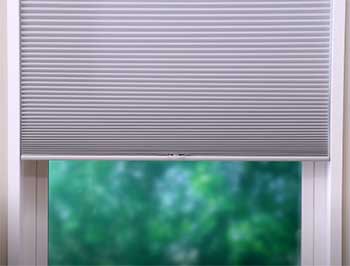
One feature I didn’t expect to care about was energy efficiency, but it’s a big deal with modern shades.
Many are designed to do more than just look pretty—they help regulate your home’s temperature.
Cellular shades, for instance, have a unique honeycomb structure that traps air, creating an insulating barrier.
I noticed a difference in my heating bill after installing them, which made the cost feel a bit more justified.
Specialty features like UV protection or moisture resistance also add to the price. I looked at shades for my bathroom, where humidity is a constant issue. The ones I chose were treated to resist mold and fading, which required special coatings and materials.
These extras aren’t just nice-to-haves; they extend the life of the shades, but they definitely bump up the cost.
Some shades even come with dual-layer designs, letting you switch between sheer and blackout settings with a single mechanism. I was tempted by these for my bedroom, but the complexity of the design meant a higher price.
When you’re paying for shades that multitask, you’re also paying for the engineering that makes it possible.
Supply Chain and Import Costs
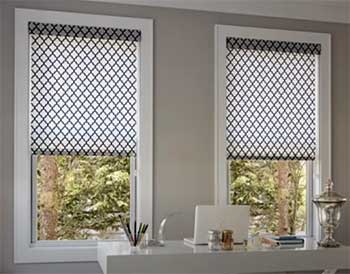
I hadn’t considered the global journey of window shades until I started researching.
Many high-quality shades, especially those with premium fabrics or hardware, are sourced from multiple countries.
The fabric might come from Italy, the motors from Germany, and the assembly might happen in the U.S. or Asia.
Each step in this supply chain adds costs, from shipping to tariffs.
I noticed that shades made entirely in the U.S. or Europe often cost more due to higher labor and material standards. Imported components, meanwhile, face duties and shipping fees that get passed on to you.
I spoke to a retailer who mentioned that recent supply chain disruptions—like port delays or material shortages—have driven prices even higher. It’s frustrating, but it’s a reality of the global market.
Even local brands aren’t immune. The hardware for my shades, like the brackets and rollers, was sourced from overseas, which added to the cost. When you’re buying shades, you’re not just paying for the product—you’re covering the logistics of getting it to your window.
Durability and Longevity
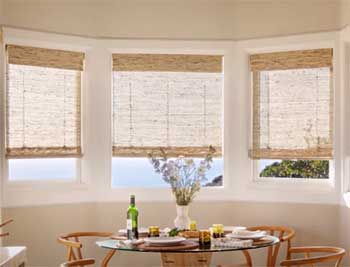
One argument for expensive shades is that they last.
I was initially tempted by budget options, but after reading reviews, I realized cheap shades often fade, fray, or break within a couple of years.
Premium shades, on the other hand, are built to withstand daily use and harsh conditions like sunlight or humidity.
For example, I invested in some wooden blinds with a UV-resistant finish. They’ve held up beautifully for years, while my old bargain blinds yellowed and warped. High-end shades often come with warranties that cover defects or fading, which adds peace of mind. I saw warranties ranging from 5 to 20 years, which is unheard of for cheaper alternatives.
The durability comes from quality materials and construction. I learned that premium shades use stronger stitching, reinforced hems, and heavy-duty hardware. While it’s hard to justify the upfront cost, I’ve come to see it as an investment in something that won’t need replacing anytime soon.
Frequently Asked Questions (FAQ)
Shades are expensive due to premium materials, custom sizing, advanced technology, labor-intensive manufacturing, and professional installation. Brand reputation and energy-efficient features also add to the cost.
Costs vary widely, but expect $100-$500 per window for mid-range shades, including installation. Custom or motorized shades can easily exceed $1,000 per window.
Basic blinds start at $50-$150 per window, while high-end or custom blinds can range from $200-$800 or more, depending on materials and features.
Yes, if you value durability, energy efficiency, or smart features. Expensive blinds often last longer, look better, and offer warranties, but budget options can work for simple needs.
Wrapping Up
I’ve spent a lot of time wondering why window shades cost so much, and after breaking it down, I hope you see the bigger picture too. From premium fabrics to smart technology, custom designs to skilled craftsmanship, the price reflects a lot more than just a piece of cloth.
Each element—materials, labor, tech, and even the supply chain—adds up to create a product that’s both functional and beautiful. While it’s tempting to go for the cheapest option, I’ve learned that investing in quality shades pays off in durability and comfort.
You deserve windows that look great and work hard, so weigh your options carefully.
